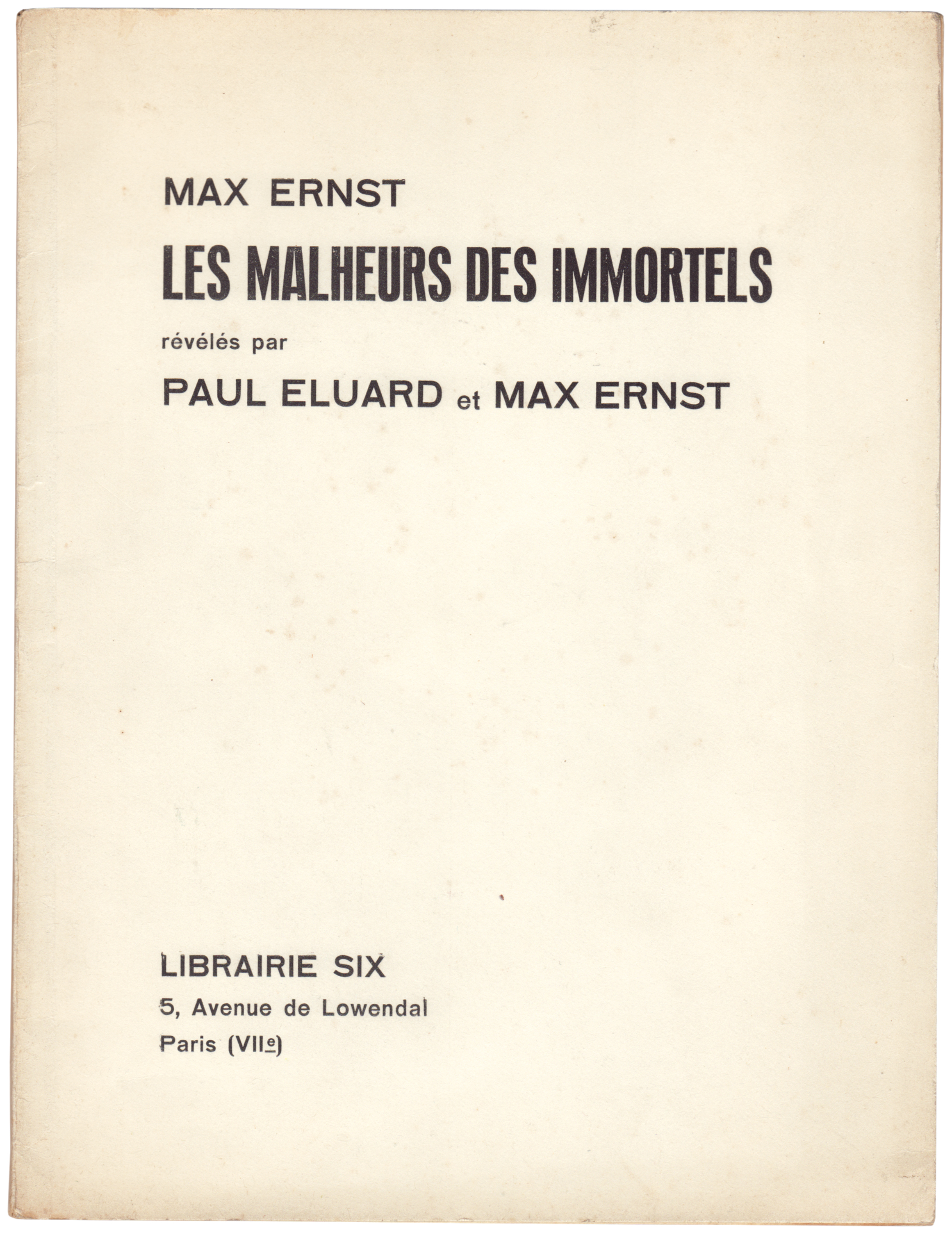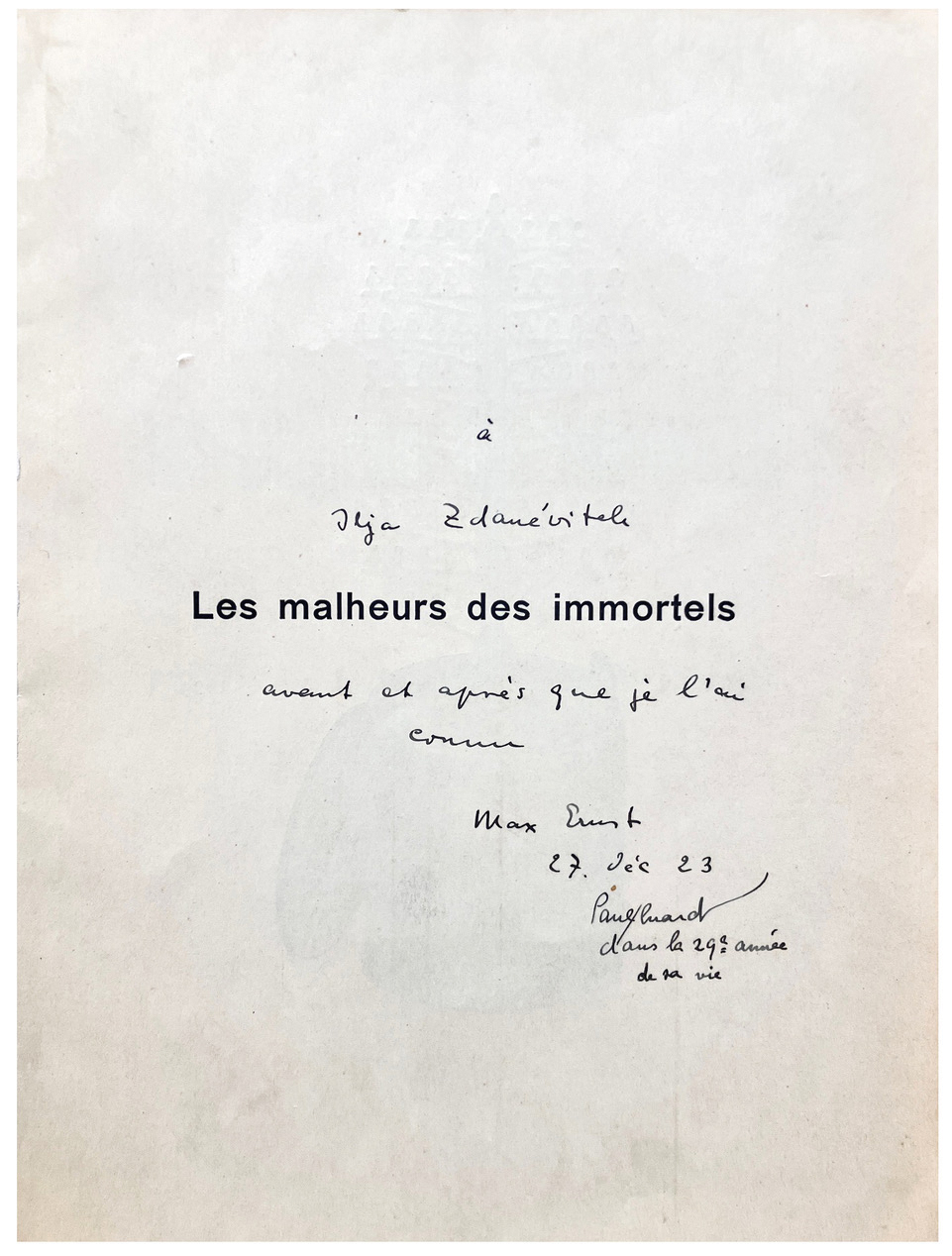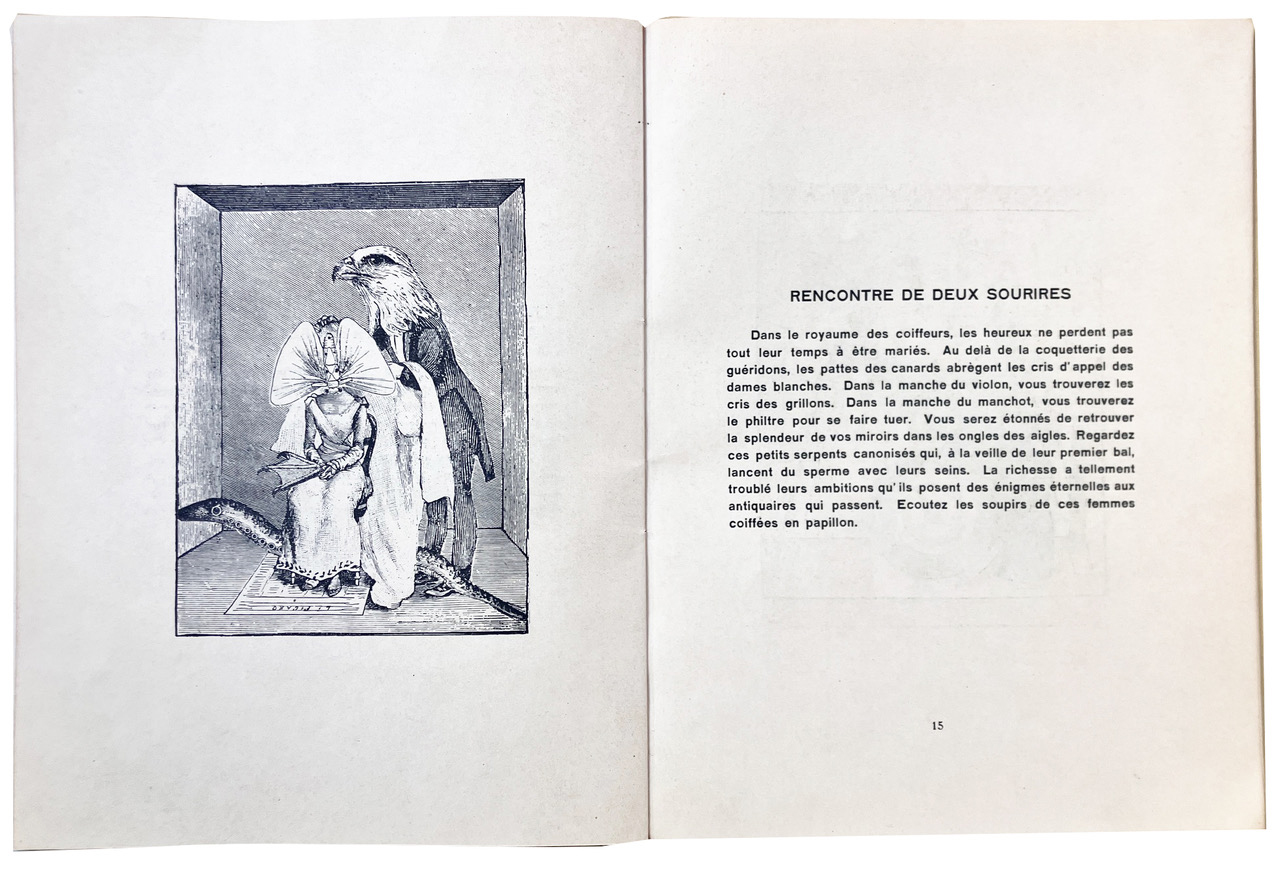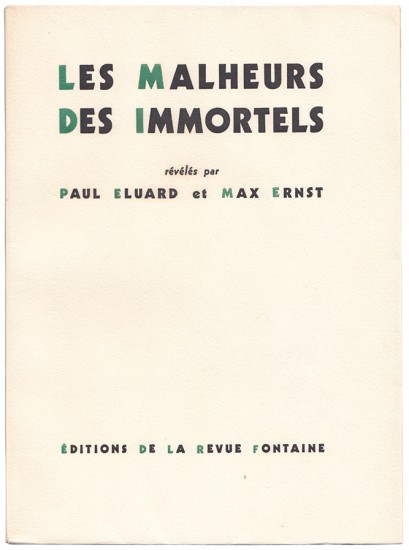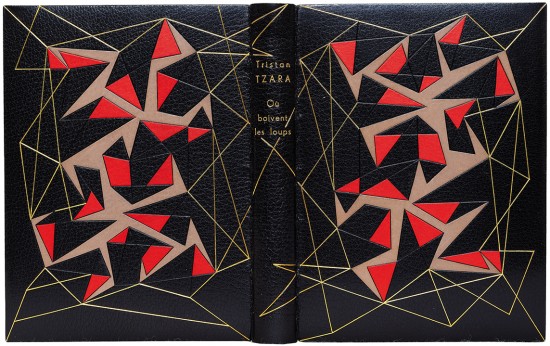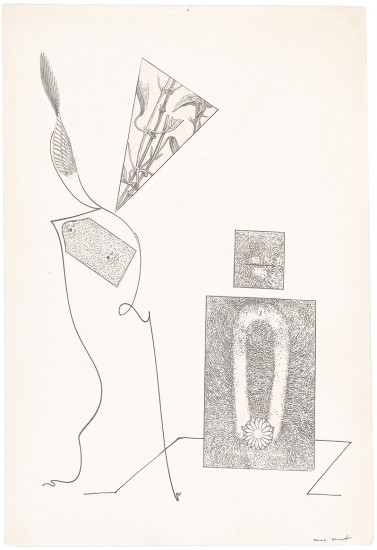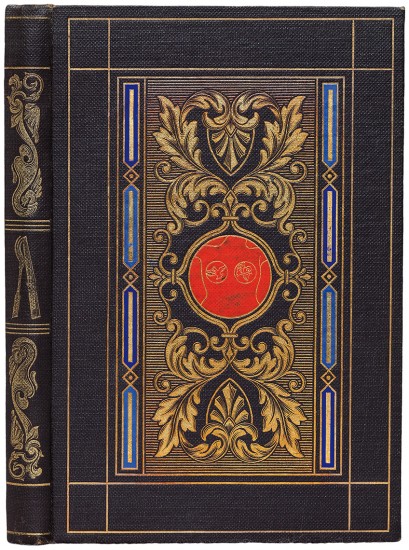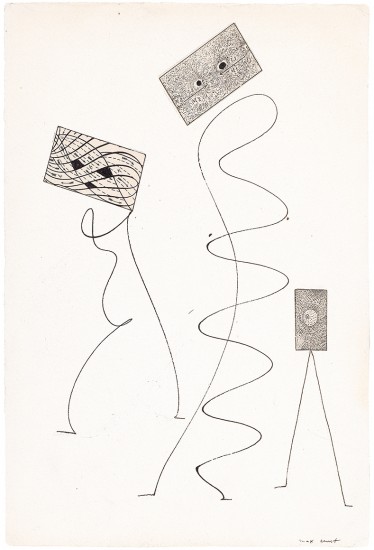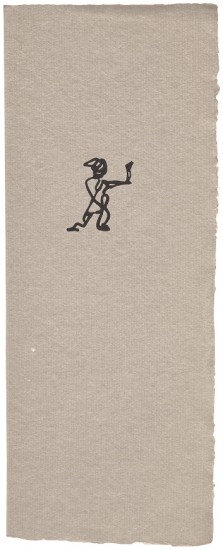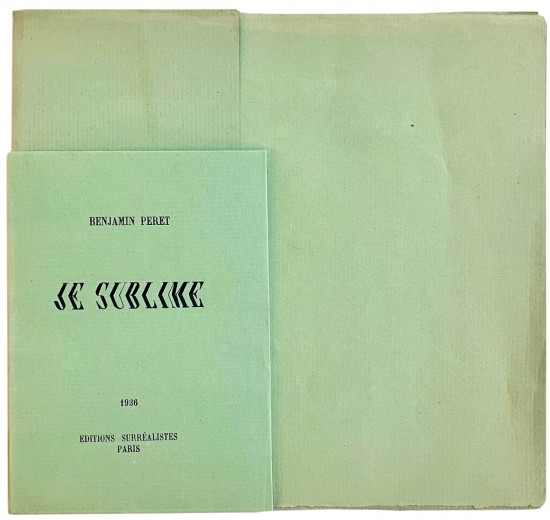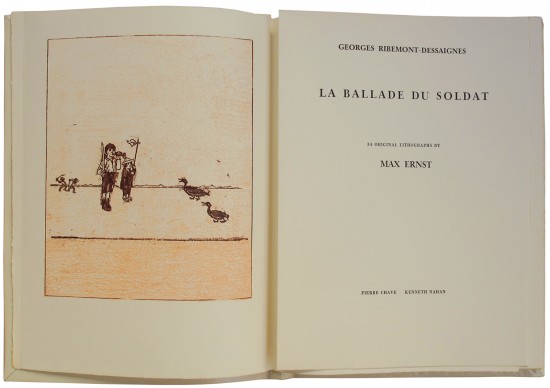Les Malheurs des Immortels révélés par Paul Eluard et Max Ernst
Ernst, Max. Eluard, Paul
Paris. Librarie Six. 1922
Iliazd's presentation copy - with a double presentation from both Max Ernst and Paul Eluard - of the first edition of the seminal collaboration marking the boundary between dada and Surrealism.
From the small edition of unknown size on simili-japon with a presentation in black ink in both the hands of Max Ernst and Paul Eluard to the half-title: 'à / Ilja Zdanévitch / Les malheurs des immortels [printed half-title] / avant et après que je l'ai / connu / Max Ernst / 27. déc. 23 / Paul Eluard / dans la 29e année / de sa vie'.
Iliazd (Ilia Zdanevich or, as here, Ilja Zdanévitch, 1894 - 1975) was a Georgian-born avant-garde Russian Futurist poet and after he emigrated to France in 1921, a publisher, a typographer and the impresario for arguably the most beautiful books made in the twentieth century. After his arrival in Paris, Iliazd moved in determinedly avant-garde circles, participating in, while maintaining a distance from, dada events, publications and manifestations. The presentation from Ernst and Eluard, 'Les Malheurs des Immortels' was their second collaboration after 'Répétitions' published earlier in the year, is particularly moving as all remained friends throughout all of their lives. Iliazd published his book 'Un Soupçon' with verse by Eluard in homage to his deceased friend the poet and with Max Ernst, he made his masterpiece and magnum opus, '(65) Maximiliana ou l'Exercise Illégal de l'Astronomie'.
This first edition of 1922 - which was issued in very small numbers - of 'Les Malheurs des Immortels' matches Paul Eluard's prose poems with Max Ernst's 'synthetic' collages. Each poem is faced with one collage. The final leaf verso features an advertisement for Ernst and Eluard's previous text / collage collaboration 'Repetitions' which was published earlier in the same year.
'Ce livre d'étroite collaboration peintre-poète est un des jalons majeurs du livre au vingtième siècle ... Pour Werner Spies ('La Révolution Surréaliste', 2002) le livre exprime une 'rupture visible du monde objectif, matérialisée par les images', rupture entre les plans sémantiques qui est aussi réciprocité, où la 'consience bicéphale' donne une coordination précise au texte et aux paires collage-texte ... Les thèmes des collages des 'Malheurs des Immortels', incluent des métamorphoses hoome-animal, des parties vivantes animant des machines, les éléments (air, eau ... ) mêlés, ou la tension électrique, mécanique ou érotique ... L'importance de ces collages est soulignée par le fait que c'est essentiellement grâce à eux que le groupe surréaliste naissant prit conscience des possibilités plastiques du surréalisme.' (De Parallèlement à Chanson Complète).
A second edition in smaller format was published by Editions de la Revue Fontaine, also in Paris, in 1945; the first edition in English was published by the Black Sun Press in New York in 1943. A German edition was published in Cologne by Galerie der Spiegel in 1960.
[see 'De Parallèlement à Chanson Complète', pp. 167 - 174].
From the small edition of unknown size on simili-japon with a presentation in black ink in both the hands of Max Ernst and Paul Eluard to the half-title: 'à / Ilja Zdanévitch / Les malheurs des immortels [printed half-title] / avant et après que je l'ai / connu / Max Ernst / 27. déc. 23 / Paul Eluard / dans la 29e année / de sa vie'.
Iliazd (Ilia Zdanevich or, as here, Ilja Zdanévitch, 1894 - 1975) was a Georgian-born avant-garde Russian Futurist poet and after he emigrated to France in 1921, a publisher, a typographer and the impresario for arguably the most beautiful books made in the twentieth century. After his arrival in Paris, Iliazd moved in determinedly avant-garde circles, participating in, while maintaining a distance from, dada events, publications and manifestations. The presentation from Ernst and Eluard, 'Les Malheurs des Immortels' was their second collaboration after 'Répétitions' published earlier in the year, is particularly moving as all remained friends throughout all of their lives. Iliazd published his book 'Un Soupçon' with verse by Eluard in homage to his deceased friend the poet and with Max Ernst, he made his masterpiece and magnum opus, '(65) Maximiliana ou l'Exercise Illégal de l'Astronomie'.
This first edition of 1922 - which was issued in very small numbers - of 'Les Malheurs des Immortels' matches Paul Eluard's prose poems with Max Ernst's 'synthetic' collages. Each poem is faced with one collage. The final leaf verso features an advertisement for Ernst and Eluard's previous text / collage collaboration 'Repetitions' which was published earlier in the same year.
'Ce livre d'étroite collaboration peintre-poète est un des jalons majeurs du livre au vingtième siècle ... Pour Werner Spies ('La Révolution Surréaliste', 2002) le livre exprime une 'rupture visible du monde objectif, matérialisée par les images', rupture entre les plans sémantiques qui est aussi réciprocité, où la 'consience bicéphale' donne une coordination précise au texte et aux paires collage-texte ... Les thèmes des collages des 'Malheurs des Immortels', incluent des métamorphoses hoome-animal, des parties vivantes animant des machines, les éléments (air, eau ... ) mêlés, ou la tension électrique, mécanique ou érotique ... L'importance de ces collages est soulignée par le fait que c'est essentiellement grâce à eux que le groupe surréaliste naissant prit conscience des possibilités plastiques du surréalisme.' (De Parallèlement à Chanson Complète).
A second edition in smaller format was published by Editions de la Revue Fontaine, also in Paris, in 1945; the first edition in English was published by the Black Sun Press in New York in 1943. A German edition was published in Cologne by Galerie der Spiegel in 1960.
[see 'De Parallèlement à Chanson Complète', pp. 167 - 174].
[22 leaves; pp. 43, (i)]. 4to. (250 x 190 mm). Half-title with monochrome frontispiece by Ernst verso, printed title and Eluard's text illustrated with twenty monochrome plates after collages by Ernst, final leaf verso with advertisement and achevé d'imprimer. Original publisher's printed wrappers with titles to front cover in black.
#48449
